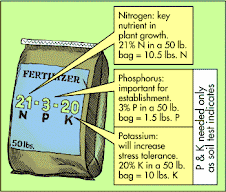
Our leaves just fell yesterday, as sudden a leaf fall as I remember. A large cold front blew in rather fiercely and downed all the leaves. The chill in the air is our notice to prepare the home landscape for winter. In preparing for winter you will probably want to leaf rake, mulch, transplant or plant and evaluate trimming and pruning.
Raking: If you have oaks, leaves fall all winter! Our large oaks seem to have a perpetual supply of leaves strategically released after we get the last batch raked. As much as I love the look of leaves on the ground, for the home landscape, leaf raking is a necessity to preserve the lawn. Leaves left on the ground will smother grass creating bare spots in spring. Bare spots invite weeds. Mulch mowers help at first but as leaves pile up too much leaf mulch will kill grass. So as much as you may not want to, rake your leaves. Leaves that pile around shrubbery and tree bases can serve as winter mulch and can be left in place. Raking a couple of times instead of saving it up makes the job easier. Use a steel tined rake to prevent leaves getting stuck in the rake.
Leaf raking does rob soil around trees of a continuous supply of nitrogen, and detracts from natural soil building. But unless you have a naturalized area where grass growing is not your goal, you leaves should go. Leaf burning is restricted in some areas so consult your local forest service. Leaves deposited in a nearby woods release their stored carbon much more slowly and are therefore are better disposed ecologically than burning.
Mulching: Leaves can be used for winter mulch on a vegetable garden and around shrubs. For landscaping appearance however shredded bark mulch is most desirable. Mulch in summer controls weeds and retains moisture. In winter, mulch insulates plant roots against early freezing, before the plant fully enters dormancy. Roses benefit from mulching over their graft union. Two to three inches of mulch will usually suffice for most plants. Usually heavier mulch is applied to contour the shape and height of the bed, rather than for needs of the plants themselves. Mulch purchased by the truckload from mulch companies or landscaping concerns is much less expensive than purchased by the forty pound bag. If you are mulching an area larger than ten feet by ten feet, mulch by the truckload will save considerably.
Planting and Transplanting: Fall is a good time to plant or transplant trees and shrubs. Nurseries and home improvement stores make a large selection of these plants available at this time of year. Trees and shrubs planted until the ground freezes, which is usually mid to late December in Kentucky, will fare well over the winter and be ready to get the full benefit of spring growth. Plants in containers transplant the best. If transplanting directly from the ground, plant as early in the fall as September or October to give the plant roots time to recover and grow additional root endings. When a plant is transplanted from the ground its terminal roots and root hairs are usually damaged. As these are the areas a plant absorbs water and nutrients, these are the root areas most important to reproduce themselves. A little time is needed for root growth. Trees and shrubs in pots experience much less root damage and can therefore be planted later into the fall. Plant as you normally would but do not fertilize. You only want the roots to grow, not the plant above the soil line.
Pruning & Trimming: Pruning in fall should be kept to a minimum. Roses can be trimmed of their last flowering, but most other trimming should wait until spring. Trees and shrubs enter dormancy based on length of daylight. No daylight savings time for them! Part of their preparation for dormancy involves the setting of terminal buds, which helps the plant not grow anymore until spring. A late fall trimming shears off the terminal buds and confuses the plant. It will try to grow new terminal buds and delay dormancy. This can cause parts of the plant to be damaged by freezing. Prune woody plants and trees in spring and again in summer if you like. Shrubs can be trimmed many times in summer, but make the last trim in late August or early September.
If you accomplish all of the above you will have done a lot to put the landscape to bed for the winter. A final mowing and string trimming of the lawn in mid-November will add to the neat appearance of your home all winter. Bring the birdfeeders closer to the house so you can see them from your windows. Set out some dried, shelled corn for the squirrels, deer and wild turkey. Enjoy the panoply of fall and winter from indoors knowing that as you sit snugly indoors your yard and garden have been nicely buttoned down for the winter.
For additional information visit www.uky.edu/Ag/HLA/homehort2.html.




No comments:
Post a Comment